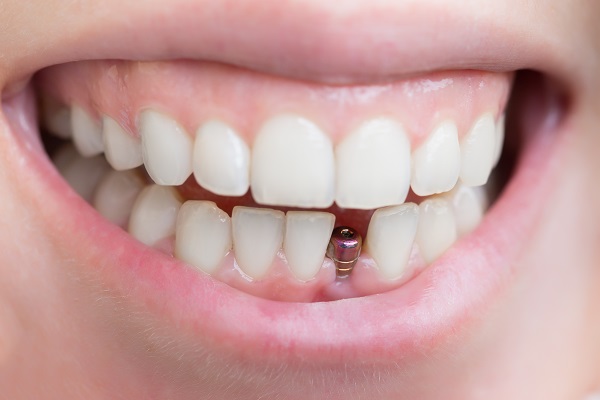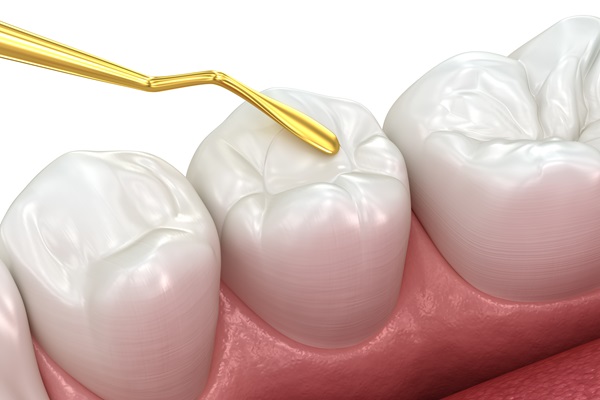Options for Dental Implant Restoration After Damage

Learning about dental implant restoration is something everyone who gets one or more dental implants needs to do, as they will need to undergo a restoration process if they happen to damage one of their implants. While it is difficult to damage an implant, it does occasionally happen, putting recipients on alert to take proper care of their implants.
About dental implants
Understanding that dental implant restoration is a necessary process for those who have somehow damaged one or more of their implants is important. Implants are one of the more popular tooth replacement options people are choosing, as they not only look like real teeth, they also act like real teeth. This is because they are surgically inserted into the jawbone, which helps to support the jawbone against the loss of a tooth’s root. This makes this type of dental restoration one that needs special treatment when damaged.
According to the American Academy of Implant Dentistry, when performed by a trained and experienced dental implant dentist, dental implant surgery is one of the safest and most predictable procedures in dentistry.
When implants are damaged
The list below includes the different options available for dental patients who are living with a damaged implant. When it comes to fixing an implant, it depends on what has been damaged – the implant, the abutment or the crown. The most common reasons why a patient would experience any type of implant damage is either due to an infection or experiencing a loss of jawbone. Signs of a damaged implant include gum soreness, gum recession, discomfort and/or pain and swelling in the implant area.
Replacing the implant
The implant is the part of the false tooth that gets surgically inserted into the jawbone. If the actual implant is damaged, the only option to restore the implant is to remove and replace it with a new implant. Some patients will require a bone graft if there is no longer enough jawbone to support the placement of the new implant. Implant restoration services are fairly common for those who are experiencing implant problems.
Replacing the abutment
The abutment is the part of the false tooth that attaches to the implant. This attachment allows a dental professional to place the crown on the implant, allowing for a permanent and natural tooth replacement option. If the abutment has been damaged, it is often due to the screw becoming loose or falling out. Abutment restoration will replace the abutment, allowing the patient to once again have a strong and sturdy implant.
Replacing the crown
The crown is the actual false tooth, which can become loose, crack and even fall off of the abutment. If this is the cause for the dental implant problem, then a dental professional can make a new crown for the patient. Sometimes it is possible to repair the damaged crown without having to remove it from the mouth using dental bonding. Once a crown begins to improperly function, the sooner one makes a dental appointment, the easier it will be to make any necessary restoration repairs.
In need of a dental implant restoration?
Making an appointment for dental implant restoration is necessary. When it comes to how the implant will be repaired, it depends on the type of damage. Because the dental implant placement procedure is one that takes many months to complete, it is essential for those who choose to have implants placed in their mouth to place a lot of importance on proper oral care.
Request an appointment here: https://stunningsmilesoflakeforest.com or call Stunning Smiles of Lake Forest at (949) 258-7433 for an appointment in our Lake Forest office.
Check out what others are saying about our dental services on Yelp: Dental Implant Restoration in Lake Forest, CA.
Recent Posts
Looking for dental restoration information? Dental restorations are used every day in general dentistry. They are designed to repair and restore teeth that are in bad shape, whether it be due to an infection, injury, or genetic imperfection. The most common dental restorations are fillings, crowns, veneers, and composite bonding. Each is used for a…
A dental restoration is administered by dentists to help patients repair teeth that have become damaged from injuries or cavities. There are a lot of different dental restoration options, each benefiting patients in different ways. Knowing which procedure is best requires careful consideration and the assistance of a dentist. Ready to learn more?The following information…
As the world of dentistry continues to evolve and progress, there are many ways to restore and repair the teeth, such as dental onlays. Dentists use onlays every day as a way to treat damaged teeth as well as provide preventative measures to teeth that may become damaged if ignored.When considering restorative options for the…
Once tooth enamel has fully eroded, it cannot grow back. However, you can restore tooth enamel before it is gone with the proper care techniques.By understanding how to restore tooth enamel to full strength, you can reverse the effects of enamel erosion before it is too late as well as ensure enamel erosion does not…


